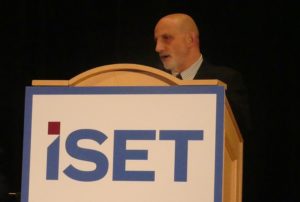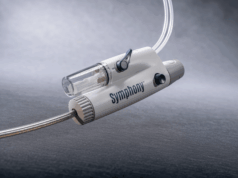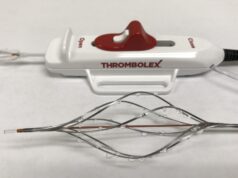
“We need to check for signs of recurrence and functional impairment, and follow these patients much more closely,” urged Kenneth Rosenfield (Massachusetts General Hospital, Boston, USA), speaking on the long-term outcomes for pulmonary embolism (PE) patients at the International Symposium on Endovascular Therapy (ISET; 22–25 January 2020, Hollywood, USA).
Part of a session that focused specifically on approaches to PE, Rosenfield opened his talk by emphasising that “while the annual incidence of pulmonary embolism continues to increase, case fatality rates appear to be improving over time”. However, he also asserted that a number of patients are affected by chronic thromboembolic pulmonary hypertension (CTEPH) and other less severe forms of post-PE syndrome.
Explaining the problem further, Rosenfield said: “CTEPH occurs when a patient with a PE has incomplete resolution of the thrombus and experiences compromise of flow to their pulmonary vascular bed. These patients can develop progressive pulmonary hypertension and right heart failure.” CTEPH patients, according to the speaker, are best treated with open surgical pulmonary thromboembolectomy (PTE), though balloon pulmonary angioplasty (BPA) is also an option that is now more available.
Although Rosenfield was eager to affirm that this post-PE syndrome is “a very treatable form of pulmonary hypertension”, he also underlined that the natural history of CTEPH is quite dismal. “If you have CTEPH and associated severe pulmonary hypertension with a peak pulmonary artery pressure above 50mmHg, and do not receive treatment, you are basically dead within five years. Treatment then is critical, especially for more severe patients; both PTE and BPA are very effective and actually save lives, as well as making patients feel a whole lot better.”
Citing data from the New England Journal of Medicine, which estimates that overall incidence of CTEPH following PE is approximately 3–5%, the presenter commented that, while the figure is not that high, it remains significant.
He continued: “In addition to those with CTEPH, there is this other group of patients that do not get back to baseline and still experience long term functional impairment. We categorise these patients as having chronic thromboembolic disease (CTED), an entity that needs further exploration. Overall, we as a medical community must think more about the longer term outcomes after PE, and how we define and track recovery. Is full recovery defined by clot resolution, by recovery of RV dysfunction, by return to normal functional status and restoration of quality of life? The reality is that there is a lack of knowledge and understanding about the long-term outcomes and consequences of PE; the evidence gap is even larger than it is for acute PE.”
“No matter what parameter you look at, whether it is pulmonary pressures, exercise tolerance, quality of life, or even psychological well-being, there is clearly a significant proportion of patients who do not fully recover,” Rosenfield argued, turning his attention to the findings of the EINSTEIN PE study as one data source.
This investigation demonstrated that at three weeks after acute treatment for PE, the mean relative decrease in pulmonary vascular obstruction (PVO) was 71% and 67%, respectively, in rivaroxaban and enoxaparin treatment groups. Moreover, complete resolution was achieved in “just” 44% and 31% of these patients, respectively.
Rosenfield added: “For patients followed up beyond six months, there is very little evidence, especially in randomised trials. In the PEITHO study’s long-term follow up—out to a year—ECHO findings showed that 63 patients (36%) in the tenecteplase arm, and 55 (30.1%) in the placebo arm, reported persistent clinical symptoms after PE (p=0.23). So, the incidence of disability is higher than previously thought.”
In addition to the functional limitations caused by post-PE syndrome, psychosocial aspects of venous thromboembolic disease were also highlighted. “Perhaps many of you in the audience have seen patients with post-traumatic stress disorder after acute PE,” the speaker proposed, stating “I have definitely noted this.” To reinforce his point, Rosenfield cited an investigation into a small subset of 13 patients, which found that it takes six to 12 months to resume everyday activities, with many still limited at one year.
“So, to ask the question again,” he concluded, “how are we going to define outcomes after PE? Is it going to be anatomical, functional, physiologic, emotional, psychosocial? Will it be assessment of employment status or even economic impact? All of these really need to be considered.
“The reality is that most patients’ symptoms improve almost completely by three months, but post-PE syndrome is not uncommon. Whether thrombolysis and other treatment modalities change the natural history is yet to be determined. The proposed PE-TRACT trial, led by Akhilesh Sista, will hopefully provide some data regarding long- and short-term outcomes that are clinically relevant and important to patients and providers alike.”









